When you visit Portugal’s captivating capital city, an appetizing answer awaits the question of what to eat in Lisbon. With a bountiful supply of delicious Atlantic Ocean seafood to the west and fertile pastures churning out creamy cheeses and high-quality meats to the east, the city is a cradle of culinary delights.
From traditional family-run tascas serving great value daily dishes (prato do dia) to the plethora of premium award-winning restaurants across the city, the nation’s regional cuisines are well represented alongside local staple dishes.
Codfish crafted in countless ways, creamy custard tarts famous the world over, and surprises such as the city’s love for snails and just some of the dishes awaiting you on Lisbon’s menus.
Here are 18 of the best foods to try in Lisbon.
Bacalhau
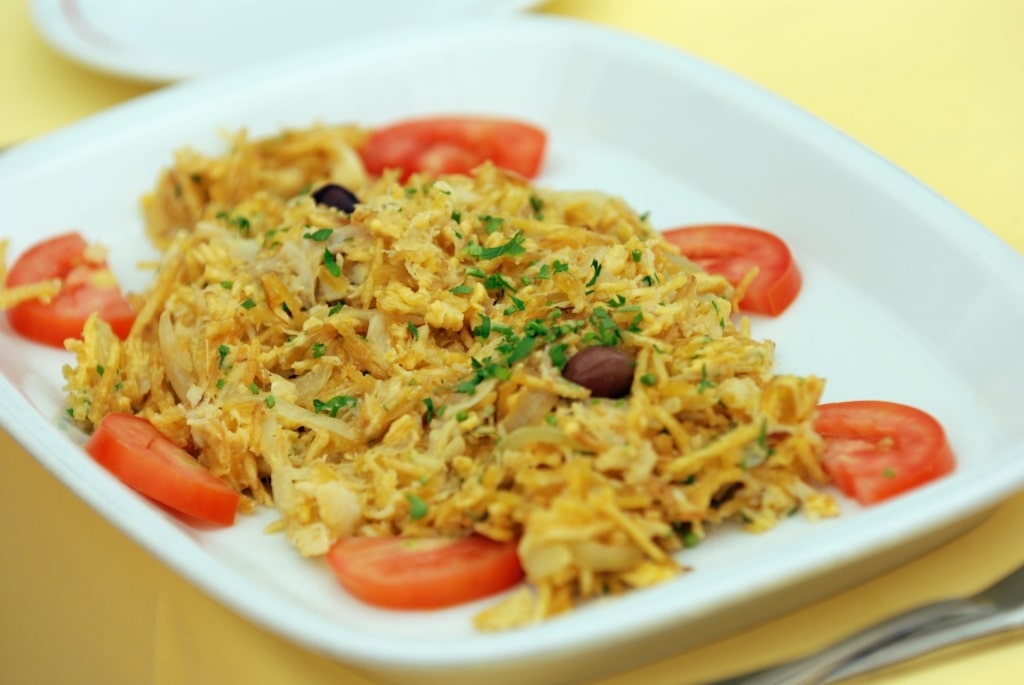
Bacalhau
From tiny cafés to the most upscale restaurants, there aren’t many menus in Lisbon that don’t feature at least one version of Portugal’s most beloved fish, bacalhau, or dried and salted codfish.
Since the 16th century, when heavy cod fishing started in Newfoundland, the salting method of preserving cod became standard, especially as cod is not natively found in Portuguese waters. Fear not, though, as for the most part, the cod is soaked before cooking to remove most of the salted flavor.

Bacalhau à brás
While there are hundreds of bacalhau recipes (claims range from 365 to over 1,000), a few versions of the dish are the most common. Bacalhau à brás, hailing from the Bairro Alto neighborhood of Lisbon, mixes shredded cod with onions, fried potato sticks, and eggs.

Bacalhau à lagareiro
Another firm favorite is bacalhau à lagareiro, heavily drizzled and roasted with garlic-infused olive oil. In snack form, the pastel de bacalhau (salt cod fritters) are a great snack on the go.
Read: How to Spend 3 Days in Lisbon
Pastel de Nata

Pastel de nata
One of the best desserts in the world, the custard-cream heavenliness of the pastel de nata is perhaps Portugal’s most iconic pastry. These egg custard tarts are at their best fresh from the oven, with a warm inside, crispy and flaky pastry, and a sprinkling of cinnamon on top.
Invented by monks in Lisbon’s Jerónimos Monastery—one of the most beautiful places in Portugal—they have been an integral part of Portuguese cuisine over the centuries. While you’ll find this sweet treat in nearly every café, a few specialized shops have become custard-cream institutions.
The cavernous blue-tiled interior of Pastéis de Belém (pastéis is the plural form of pastel) next door to the original monastery is a longstanding favorite to enjoy a tart or two with their secret recipe.
While the queue can seem long for the takeaways out front, or indeed the café, there are hundreds of seats inside, arguably worth the wait. Manteigaria, near Baixa-Chiado metro station, is another strong contender for the city’s best pastel de nata.
Frango Assado (Piri-Piri)
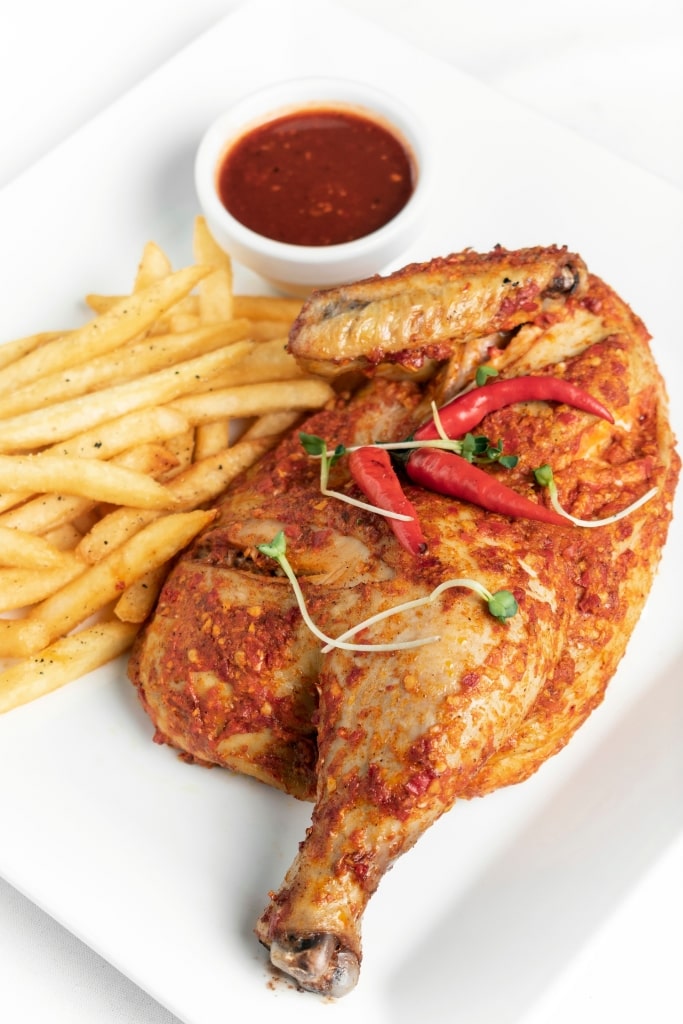
Frango assado
As with many dishes in Portuguese cuisine, the origins of frango assado (sometimes called frango no churrasco) are often debated. Regardless, the finished dish of chargrilled chicken is an easy lunch, found across local restaurants in Lisbon.
While the peppers which create the hot sauce known as piri-piri likely hail from Mozambique or South Africa, and the town of Guia in the Algarve lays claim to the original dish, leave the discussion of the origin to everyone else and simply enjoy the tender chicken and slightly spicy taste.
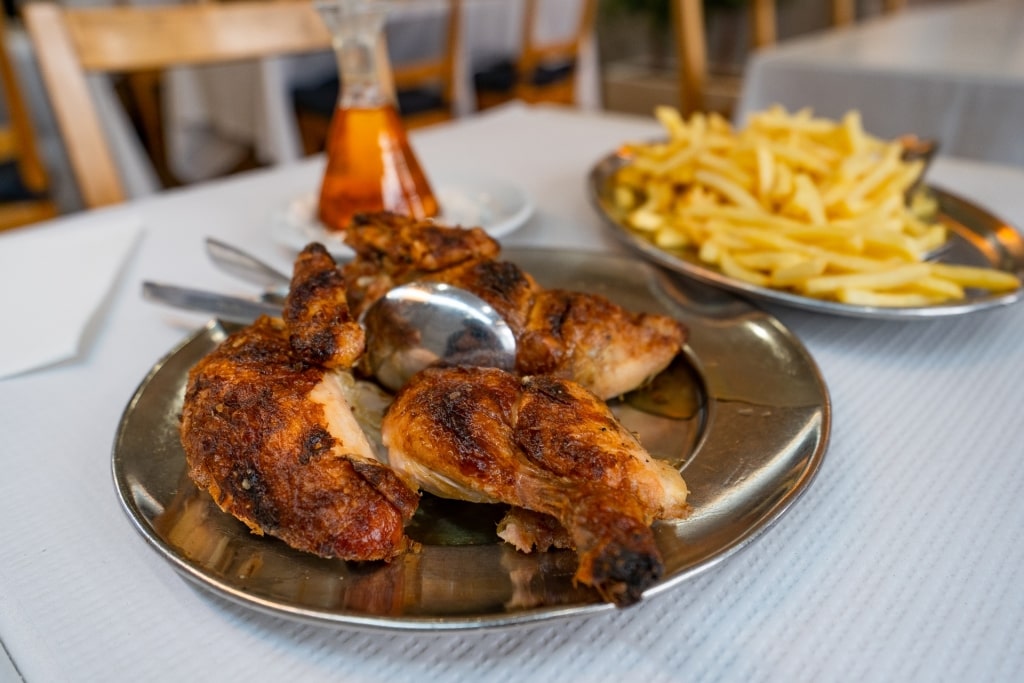
Frango assado
Sometimes, the chicken is grilled plainly, other times, the chicken is marinated in piri-piri prior to cooking, adding a mild flavor. For the total extreme mouth-awakening moment, ask for a portion of the piri-piri hot sauce to add yourself. The homemade versions are usually the fieriest.
Sardinhas
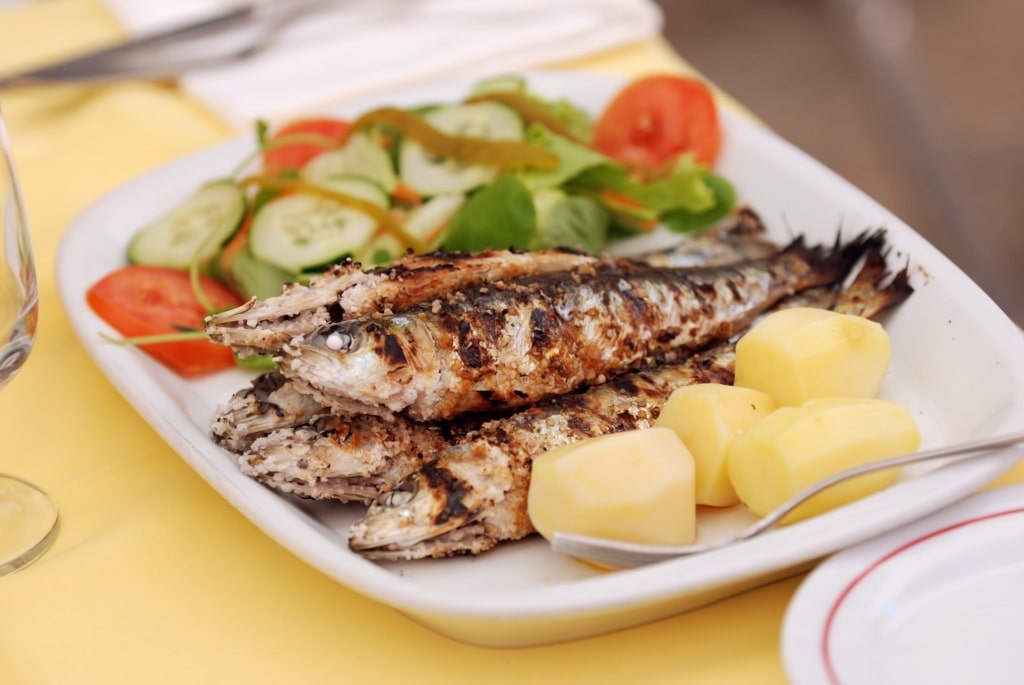
Sardinhas
Wander the streets of Lisbon from April to October, and the distinctive scent of grilled sardines floats through the air, especially in the traditional neighborhoods of Mouraria and Alfama.
An integral part of the Portuguese diet for centuries, and even more so after the boom in the country’s canning industry in the 1800s, the humble sardine is a staple to sample in Lisbon.
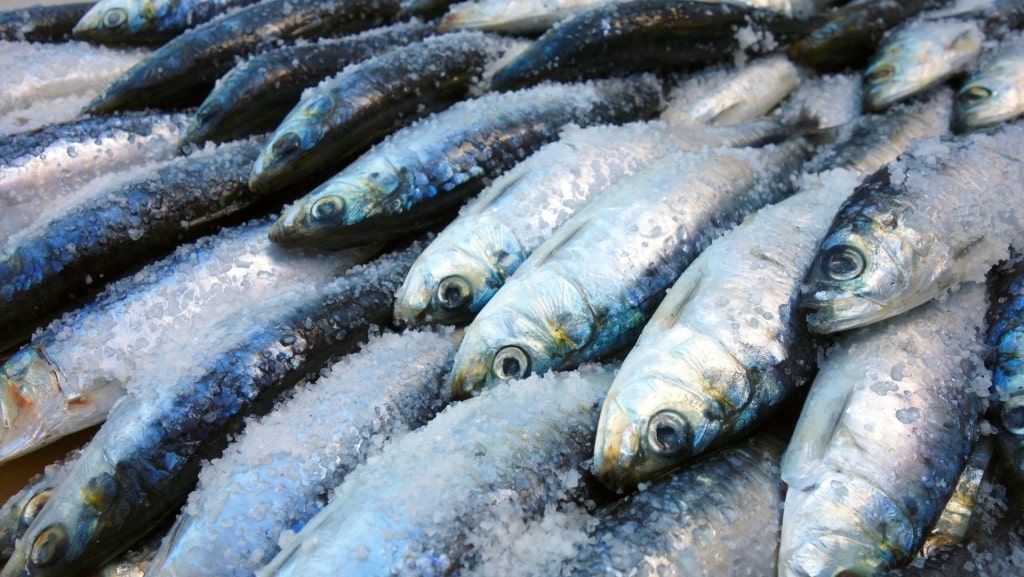
Sardinhas
During the sardine season, especially the festival days of June, they are certainly at their freshest and best, though the tinned versions shouldn’t be snubbed, either.
While Portugal has a long history in the sardine canning industry, they are suddenly enjoying a renaissance, so don’t be surprised to see tinned fish featured on even the finest of restaurant menus.
Caldo Verde
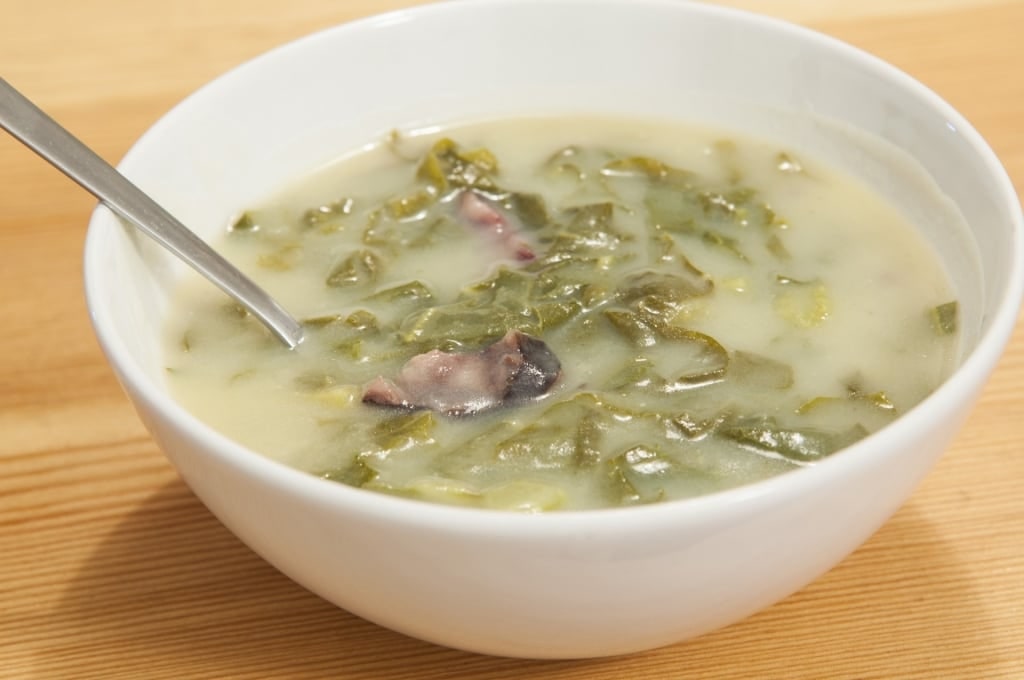
Caldo verde
If you ask a local what to eat in Lisbon for lunch, chances are soup will crop up in conversation. Portugal adores its soups, with countless different recipes from north to south. Caldo verde, originally from the Minho in Northern Portugal, is an excellent option for a filling lunch dish.
Characteristic due to its green color (the name says it all), it’s almost an unofficial national dish of Portugal. Galician cabbage, or collard greens and kale, are thinly sliced and make the main base of the soup alongside potatoes which thicken the broth while boiling.
The soup is cooked with onion, garlic, olive oil, and other seasonings and is usually served with some slices of chouriço—spicy sausage—for good measure.
Azeitão Cheese

Azeitão cheese
Queijo de Azeitão, a semi-soft, unpasteurized sheep cheese, is one of the most delicious finds on tables across Lisbon. Originating from a town of the same name 45 minutes south of the city, this cheese has won awards across the country since the 19th century.
The buttery, creamy, sour, and salty flavor has also earned Azeitão protected designation of origin status, so don’t miss the chance to try it while visiting Lisbon.

Azeitão cheese
Sometimes, Azeitão will appear on the table when you arrive at a restaurant, alongside the olives, bread, and butter. These appetizers are known as couvert in Portugal and will be charged—if you don’t wish to have the pre-meal snacks, politely decline, and the server will swiftly remove them.
Polvo à Lagareiro

Polvo à lagareiro
Olive oil, and we’re talking lashings of it, is an essential and prized ingredient in Portuguese cuisine, and in this octopus (polvo) dish, there is certainly no skimping.
The traditional recipe has no frills, allowing the ingredients really to speak for themselves. The octopus is boiled until tender as the potatoes bake before the two are combined and coated in olive oil, garlic, bay leaves, and pepper.
A little longer in the oven and a mouthwatering dish of golden octopus awaits—a true treasure of Portuguese gastronomy.
Seafood
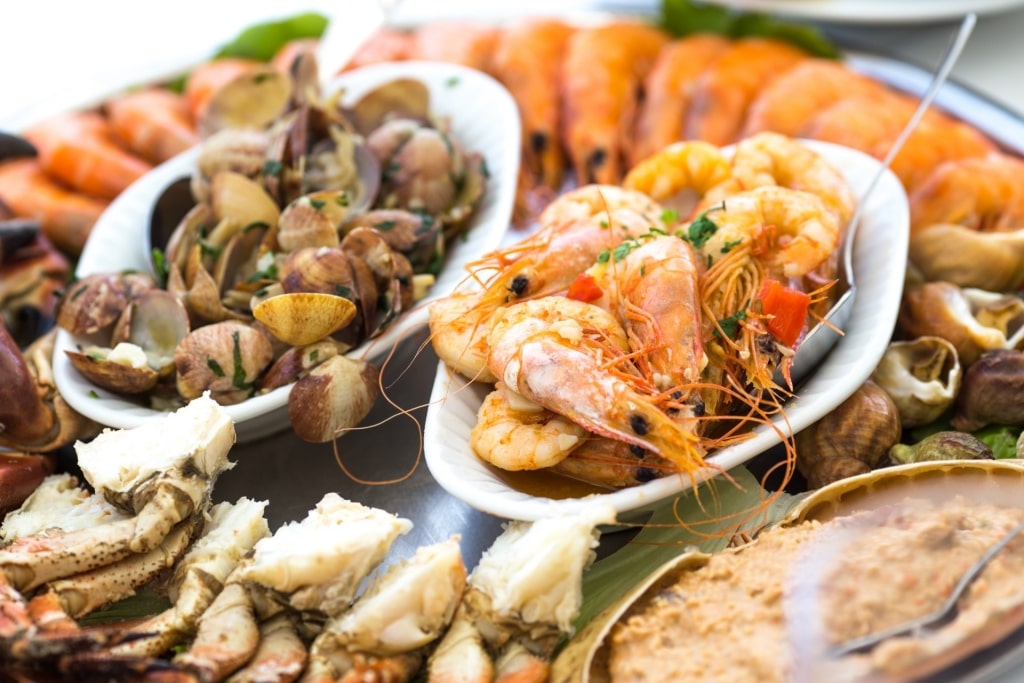
Seafood
Beyond bacalhau, sardines, and octopus, restaurant menus in Lisbon are typically heavy on seafood, thanks to their proximity to the coast.
Marisqueiras (seafood restaurants) are therefore always a terrific idea when you’re pondering what to eat in Lisbon, as heaped platters of juicy prawns, oysters, mussels, and crab never disappoint.
There are plenty of dedicated seafood restaurants in the city, with advanced bookings often needed for lunch in the most popular spots like Cervejaria Ramiro or Marisqueira do Lis.
If you fancy something a little more filling, arroz de marisco, a rice-based stew loaded with seafood in a tomato and wine sauce, is a superb dish to devour in Lisbon.
Read: Best Beaches in Lisbon
Lisboa Wines
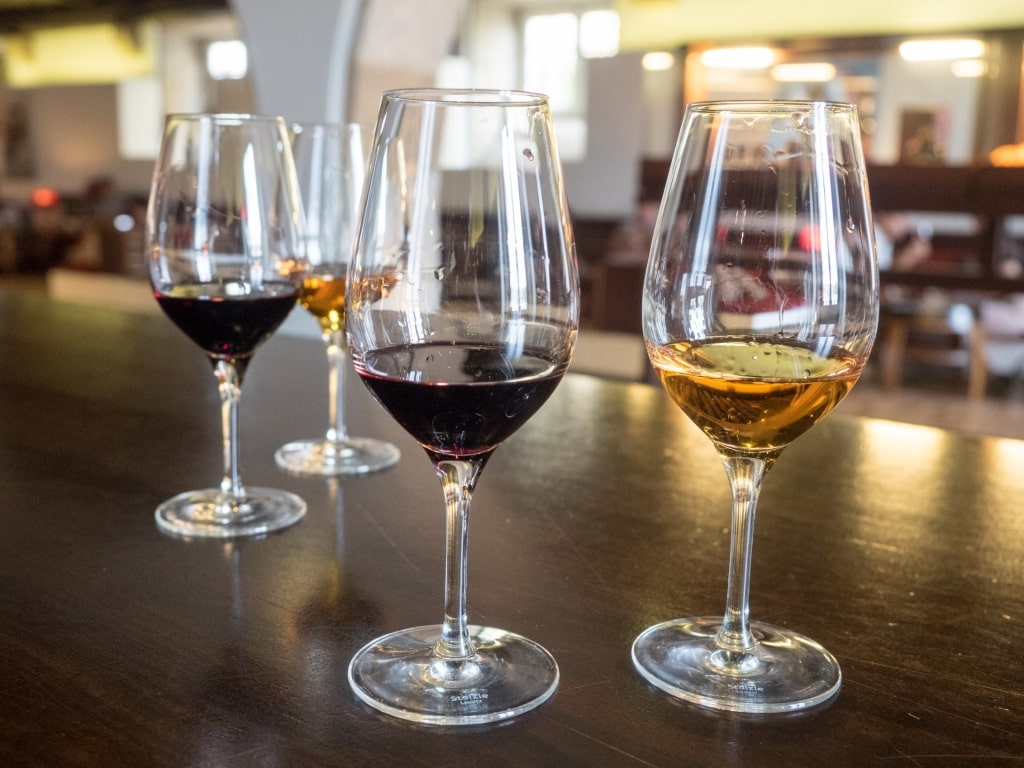
Lisboa wine
Excellent fish deserves a quality white wine to accompany it, and while the wines of the Lisboa region, known as the Estremadura wine region until 2009, might not boast the trophy cabinet that those of the Alentejo or Douro hold, they offer a refreshing accompaniment to a seafood platter.
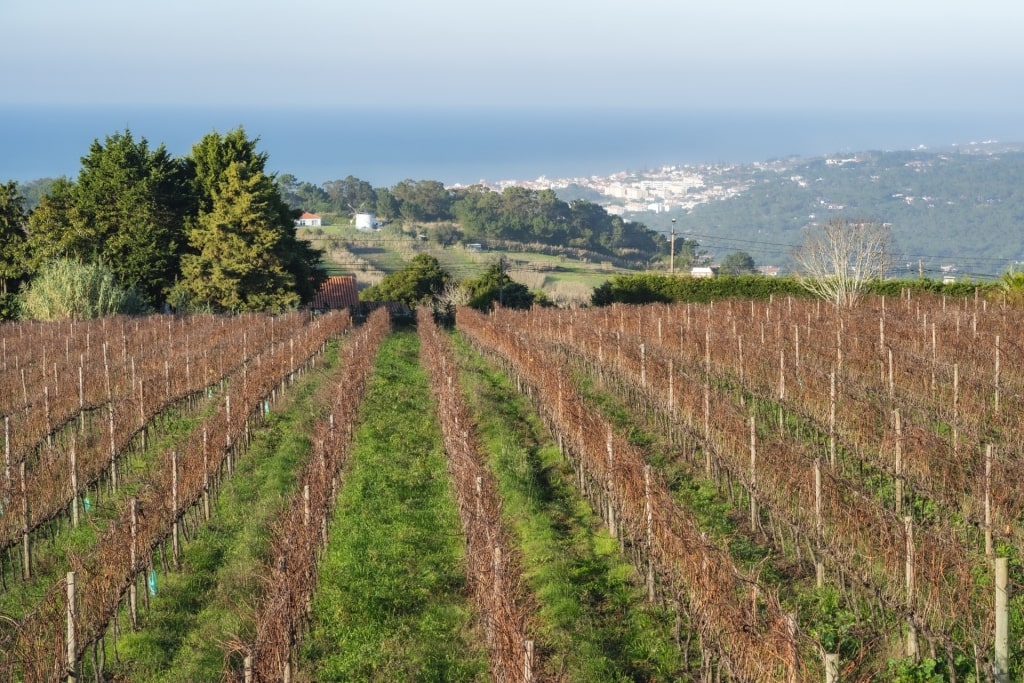
Adega Regional de Colares, Sintra
A vast array of some 20-plus local grapes produce the exciting wines that Portugal is famous for. Of particular note are the light and citrusy whites made from the Arinto grape and the unusually golden-colored Malvasia de Colares wines hailing from the coast.
You can easily visit vineyards from the city, with Adega Regional de Colares in Sintra and Adega Mãe in Torres Vedras, both just a 45-minute drive away.
Bifana
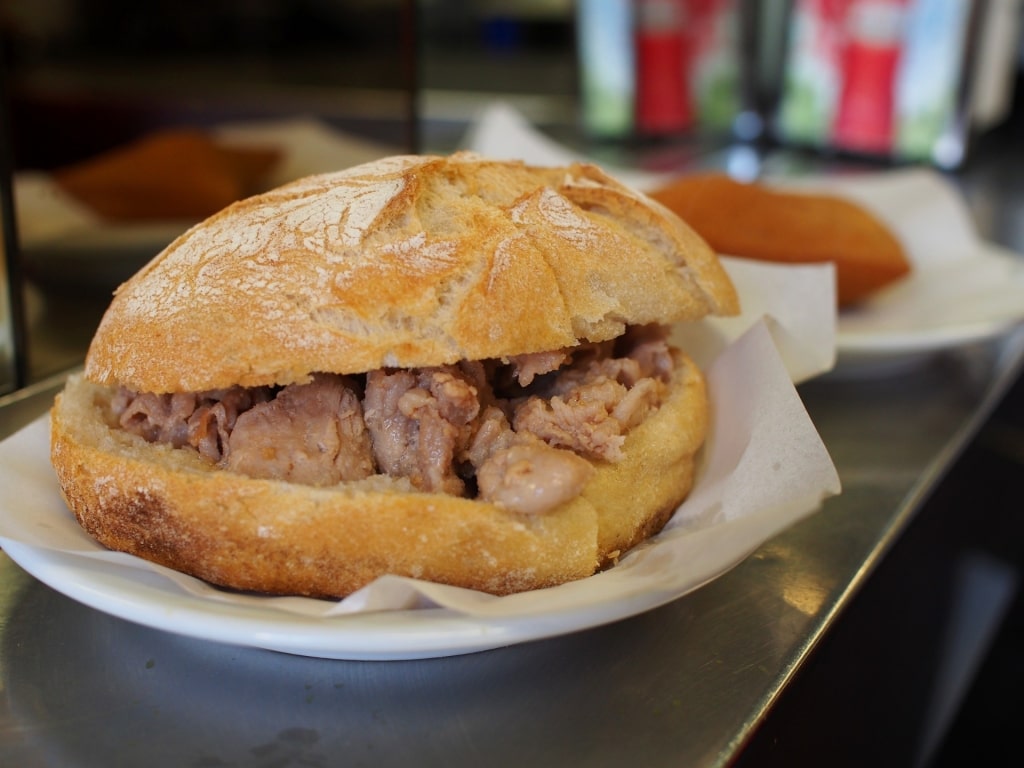
Bifana
This simple, go-to sandwich is best enjoyed on a crusty bread roll, washed down with a local Super Bock beer, and can be found in cafés across Lisbon.
Thin slices of pork are simmered in garlic, wine, and paprika and are usually topped with a generous portion of mustard or hot piri-piri sauce.
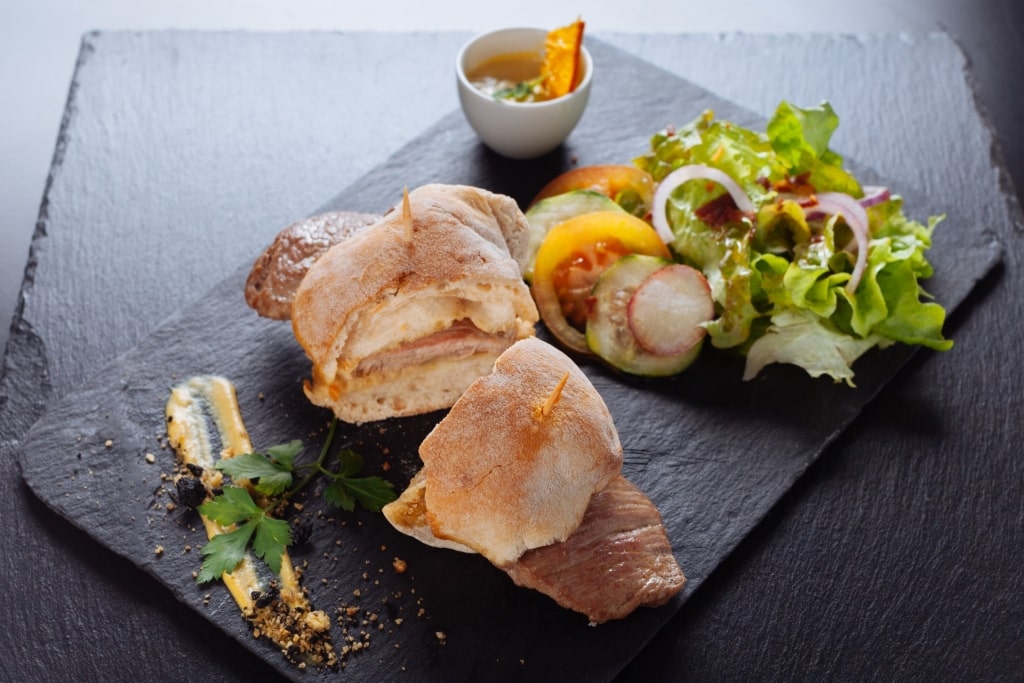
Prego
There are three other staple sandwiches across the country you may wish to try. These include the Prego, a beef steak sandwich, the Francesinha, a meat-heavy, gravy-coated dish from Porto, and the harder-to-find Sande de Leitão, a suckling pig sandwich from the central Bairrada region.
Bitoque
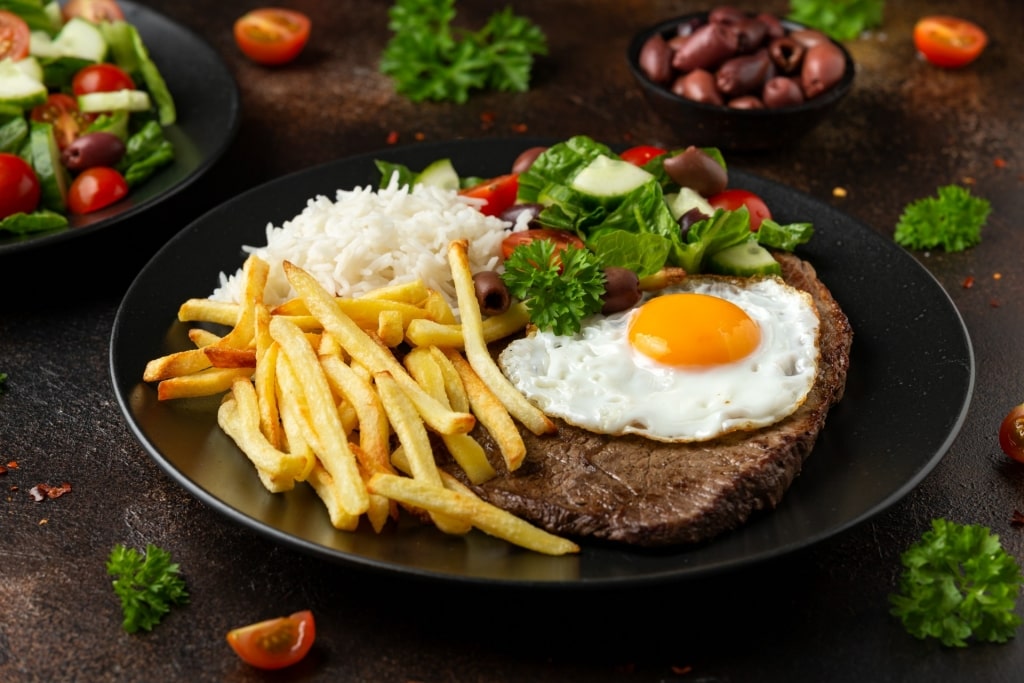
Bitoque
Popular for lunch, this simple dish consists of a thin beef or pork steak and a fried egg, usually accompanied by french fries, rice, and salad. It’s never the most adventurous option on the menu, but a common find in most traditional tascas.
For a similar dish with a little more flavor, opt for bife à Portuguesa, a steak topped with presunto (a dry-cured ham, similar to prosciutto), surrounded by thinly cut fries, and swimming in a sauce of mustard, wine, and garlic.
Ameijoas à Bulhão Pato

Ameijoas à bulhão pato
As the story goes, this mouthwatering clam dish was inspired by the preferred flavors of Lisbon poet Raimundo António de Bulhão Pato, and more than 100 years after his death, it’s still an essential part of what to eat in Lisbon.
Amêijoas (clams) are beloved in Lisbon, unsurprisingly, as the city’s Tagus River is teeming with them. For this dish, the clams are cooked in quality olive oil, garlic, cilantro, and seasoning before adding lemon juice, and occasionally wine, when serving.
While the dish sounds simple, the flavor is truly outstanding, especially when eaten riverside overlooking Lisbon from one of the restaurant terraces in Almada.
Ginjinha
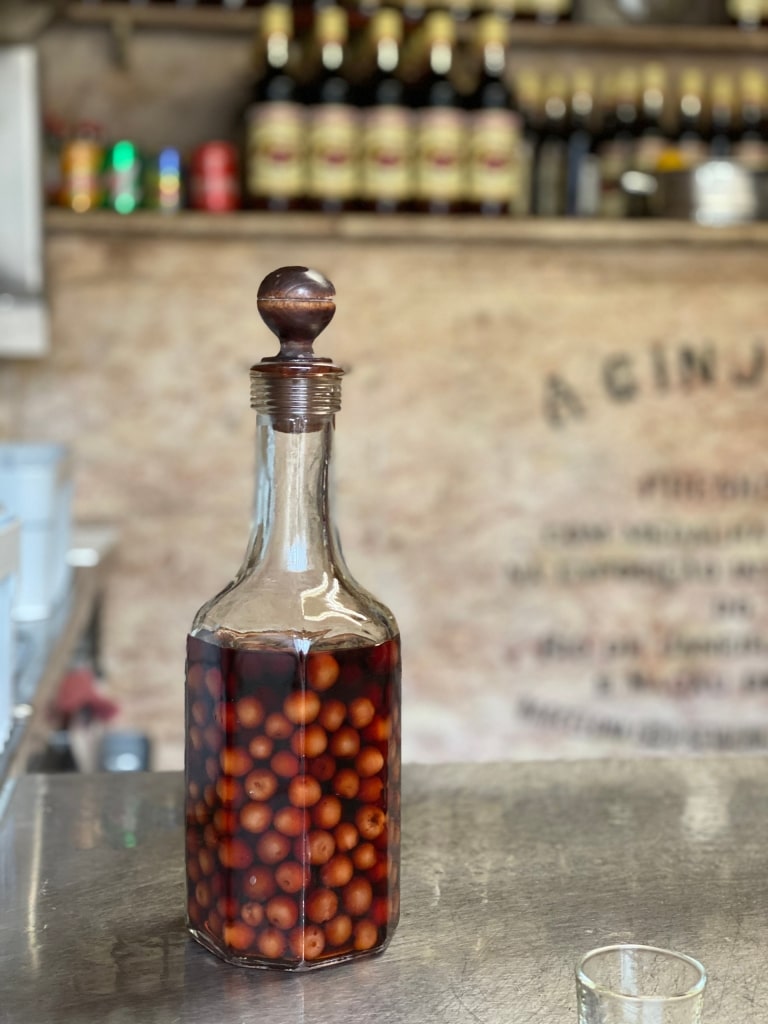
Ginjinha
Dark red and oozing with flavor, this sour cherry-infused aguardente (brandy) liquor is a popular sip in Lisbon and ideal to try between sightseeing expeditions thanks to the relatively low 18% ABV.
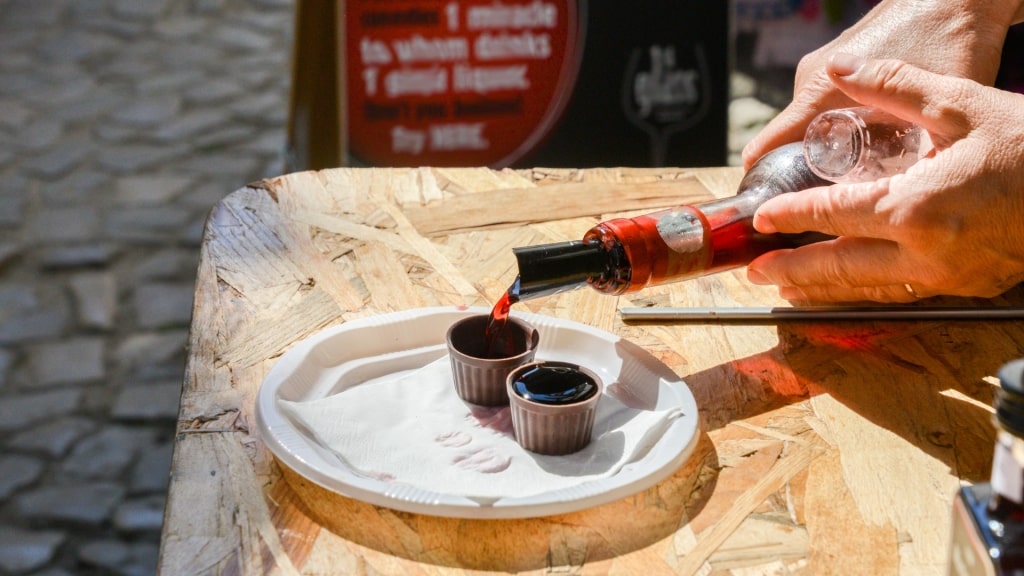
Ginjinha
You’ll find it served in little stalls and hole-in-the-wall bars across the city. Head to tiny retro A Ginjinha, near Rossio, for a traditional experience, where they will ask you if you would like the Ginjinha shot with (com) or without (sem) the sour-soaked cherry.
For something a little sweeter, forgo the cheery after-bite and opt for an edible chocolate cup instead.
Peixinhos da Horta
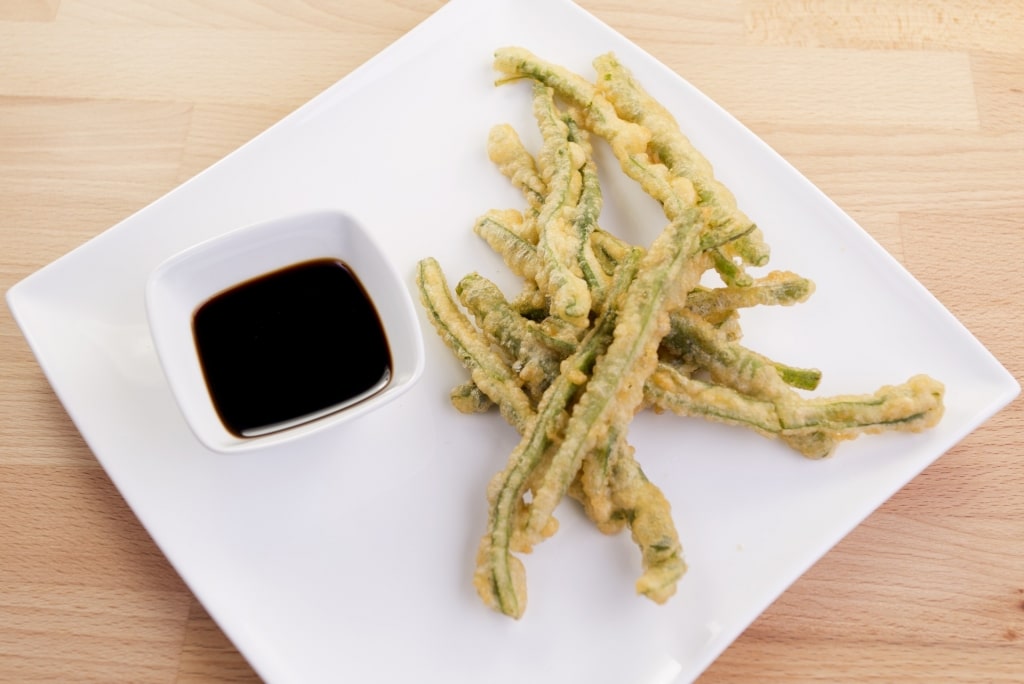
Peixinhos da horta
If you’re wondering what to eat in Lisbon as a snack that isn’t meat or fish-based, these fabulous battered green beans are a delicious choice, even if they are becoming harder to find.
While the literal translation is slightly confusing—little fish from the garden—it’s an entirely vegetarian dish of flour-coated greens.
Interestingly, this snack was introduced by the Portuguese to Japan in the 16th century, who adapted and evolved it to create one of their most well-known dishes, tempura vegetables.
Açorda

Açorda
For a typical flavor of Portugal beyond Lisbon, try this iconic dish from the vast plains of the Alentejo region, spreading out inland and to the south of Lisbon.
The bread-based soup dish is a thick and filling option, particularly appealing after a morning of climbing Lisbon’s seven hills. Bread soaked in hot water seasoned with olive oil, coriander, and garlic merge to create a hearty and comforting meal, sometimes served with an egg on top.
Caracóis

Caracóis
In summer, one of the favorite finds on the terraces of Lisbon are caracóis, small snails served up in a broth that varies from place to place.
The snails are eaten with a toothpick, either as a snack or small meal. The arrival of the season is an integral part of the city’s culinary calendar—although don’t expect to see them on the menu.
Instead, keep an eye out for the há caracóis signs which spring up in the windows of bars, restaurants, and cafés.
Craft Beer
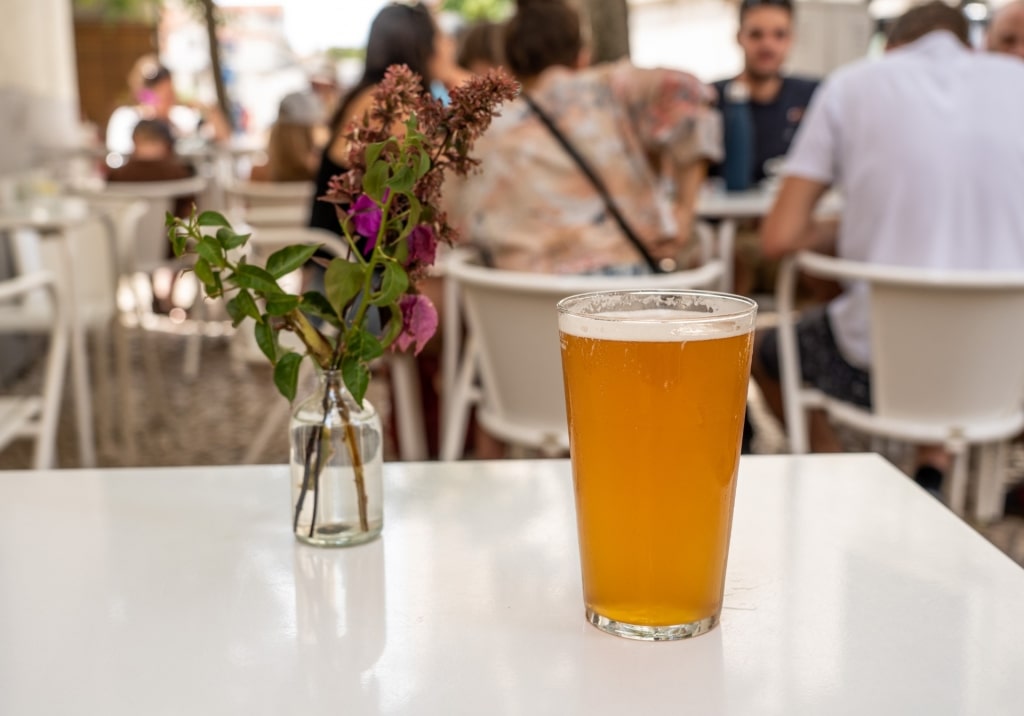
Craft beer
In recent years, the cerveja artesanal (craft beer) scene in Lisbon has flourished, with a crop of exciting micro-breweries appearing across the city. For those seeking something different from the local lagers of Sagres and Super Bock, these new brews are an exciting addition to bar menus.
The tap rooms of Musa, 8a Colina, and Dois Corvos are fantastic spots to head for a beer flight tray tasting, although many central bars now stock a few of the local Lisbon brews to savor without having to take a brewery detour.
Arroz Doce
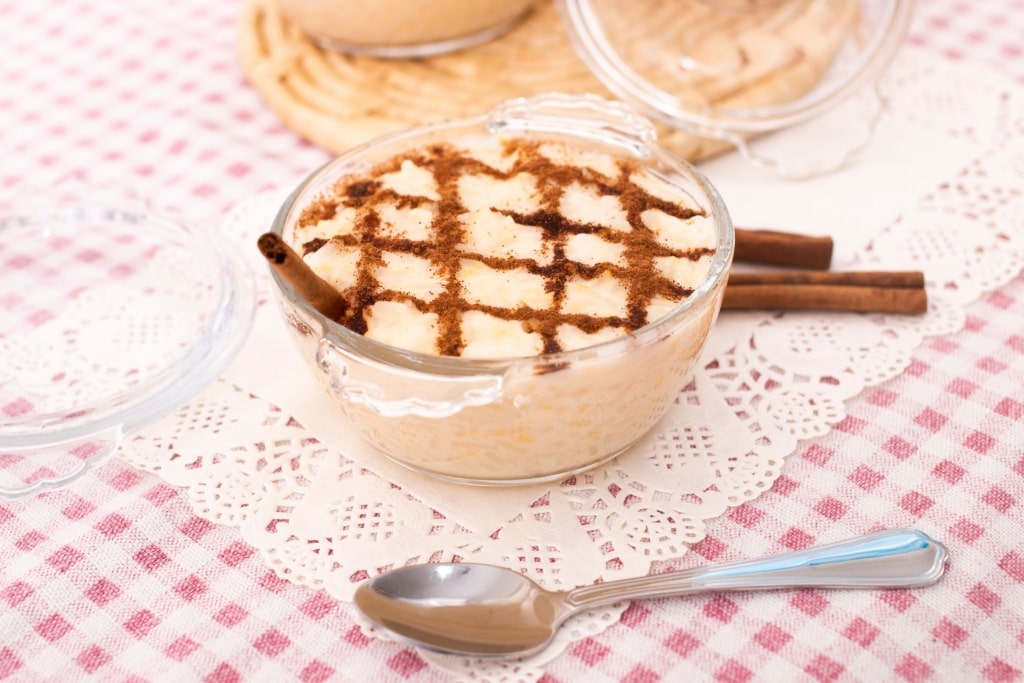
Arroz doce
If you have a sweet tooth, dessert menus in Lisbon won’t disappoint. Typical sweet afters in most Portuguese restaurants include mousses such as chocolate or baba de camelo (condensed milk, eggs, and cookies) and pudim, a type of flan.
A staple favorite is arroz doce, which literally translates as sweet rice. This thick and creamy dessert is usually served in a small glass bowl.
Add a plentiful sprinkle of cinnamon for the best taste. Given that rice paddies coat the landscape in Comporta, to the south of Lisbon, it’s no surprise that rice isn’t just seen as a main course accompaniment here.
Read: The Ultimate Guide to Shopping in Lisbon
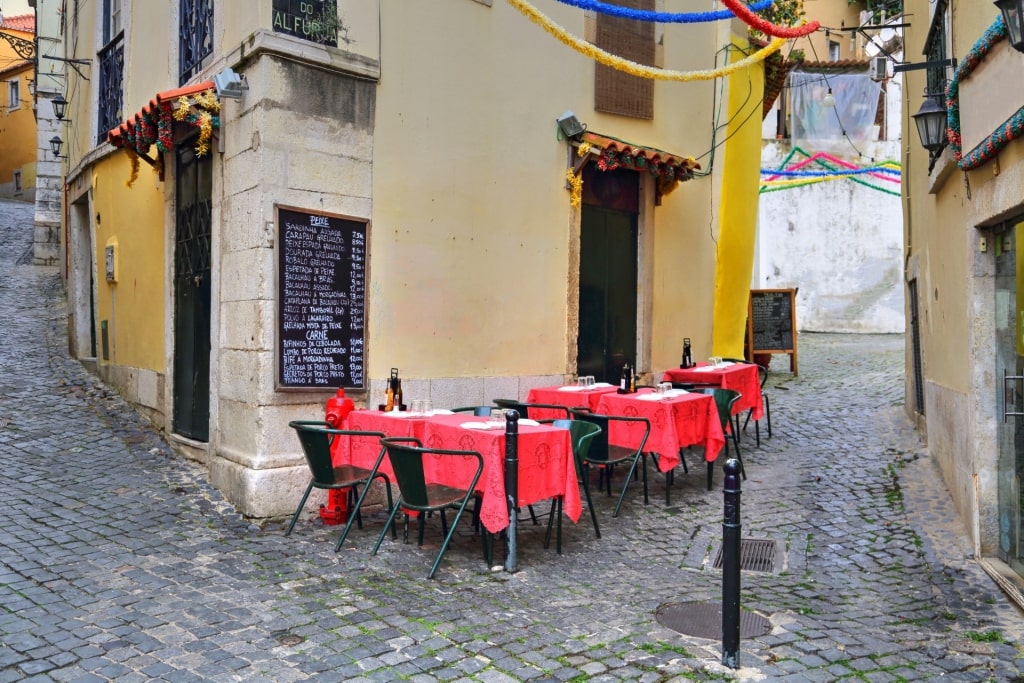
Lisbon
Eager to appease your appetite after discovering what to eat in Lisbon? Explore Celebrity’s cruises to Lisbon and start planning your next European vacation.


